
Series led by Black characters have left an indelible mark on TV. Good Times was the first to focus on a Black nuclear family, bringing Black art, Black pride and Black issues into America’s living rooms for the first time. In honor of Black History Month, here are 10 other groundbreakers.
Julia (NBC, 1968–1971)
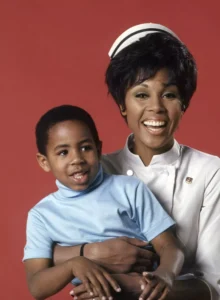
Julia was the first weekly TV series that starred a Black woman in a role that wasn’t servile.
“It was one of the first [series] to show African Americans in a middle-class environment versus a stereotypical environment where they’re servants basically,” said Marc Copage, who played Corey Baker, the young son of Diahann Carroll’s title character, a widowed nurse. “Julia was probably the first independent Black woman on TV. Diahann was a huge role model for a lot of popular Black actresses that are thriving today.”
Sanford and Son (NBC, 1972–1977)
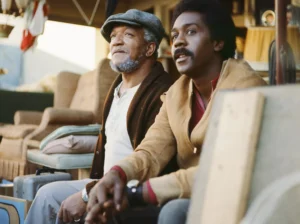
The first network series to feature a predominantly Black cast since Amos ‘n’ Andy in the ’50s, Sanford and Son starred Redd Foxx and Demond Wilson as an entrepreneurial father-and-son duo navigating life’s ups and downs in Los Angeles’ Watts neighborhood.
With Sanford and Son, Norman Lear develped a show American TV watchers hadn’t seen before (it was based on the popular British series Steptoe and Son), but that still felt familiar. The series’ lead character, Fred Sanford (Foxx), was the Black counter to Archie Bunker on All in the Family (which Lear also created). However, to see a Black man do it unapologetically — Foxx’s tendency to freestyle and deliver iconic one-liners brought levity to the proceedings — is part of what made Sanford and Son a hit.
“I believe laughter and joy adds time to one’s life,” Lear told PEOPLE in 2022. “Redd Foxx absolutely added time to my life. His earlobes were funny. His knuckles were funny.”
The Jeffersons (CBS, 1975–1985)
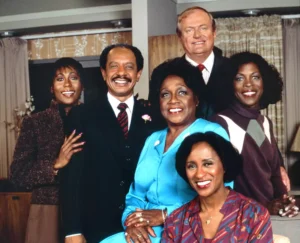
The Jeffersons was one of the first shows to portray an upper middle class Black family, paving the way for The Cosby Show and other successors. Also striking was that George Jefferson shockingly shared his cynicism about White people and race in America via blunt humor and uncomfortable truths. It was also one of the first shows to feature an interracial couple and Blackness across socio-economic statuses.
“We always wanted them to reflect America, like showing a well-off Black family,” Norman Lear, who developed the sitcom, told PEOPLE in 2022. “While we were creating the show, three members of the Black Panthers came to my office to complain about the ‘garbage’ they were seeing on TV. They were upset about Blacks only being portrayed as poor or as maids, that kind of stereotyping. Thankfully the meeting ended better than it began, as we were already creating The Jeffersons.”
Added Oz Scott, who directed 40 episodes of the sitcom: “I think people saw themselves [in the characters], and they had something to aspire to.”
The Cosby Show (NBC, 1984–1992)
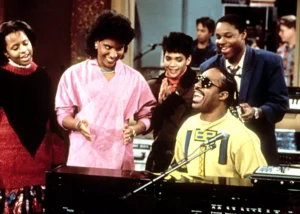
When The Cosby Show premiered, it shattered racial stereotypes and highlighted possibilities that many Black viewers actually lived — and that some had never imagined.
“Prior to The Cosby Show, Black sitcom humor was predicated on being Black, the specificity of ‘the Black experience’,” said Malcolm-Jamal Warner, who played Theo, the only Huxtable son. “Though the Huxtables were clearly Black, reflected by their dress, the art on the walls, the music, the family issues all were universal. And though Cliff was a doctor and Claire was an attorney, the family dynamic was one that practically every family, no matter the ethnicity, socio-economic status, or even family makeup, could find something to relate to. Regardless of how some people may feel about the show now, I’m still proud of the legacy and having been a part of such an iconic show that had such a profound impact on, first and foremost, Black culture, but also American culture.”
A Different World (NBC, 1987–1993)
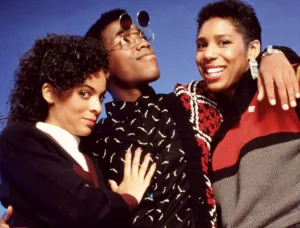
The Cosby spinoff opened doors for young Black actors and behind-the-scenes creatives. It provided a glimpse of HBCU life and inspired young minds through well-written characters and memorable plotlines.
“When A Different World comes along, you are adding people of color, various shades of brown and financial elevation, social awareness or unawareness,” said Dawnn Lewis, who starred as Jaleesa on the spin-off of The Cosby Show. “We painted a palette where there was someone for everyone. There are millions of Mr. Gaineses out there. There are millions of Colonel Taylors out there representing our military service. There are millions of Jaleesas out there, people who say, ‘I’m not giving up on myself yet.’ So, anything that we did, anything that our characters did to raise awareness or elevate the various facets of who we are in this fabric of this country and in our culture, I think that’s what still resonates today, because we’re all striving to be our best selves.”
The Arsenio Hall Show (Fox, 1989–1994)
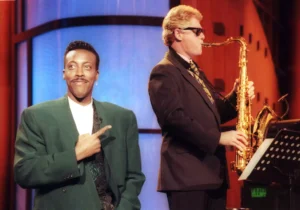
Arsenio Hall spiced up the late-night talk show format with unmatched energy. He hyped the crowd up with barking that became iconic, and often had guests that likely wouldn’t have been seen anywhere else during the late-night TV line-up.
“I created a show for people who didn’t have a show,” Hall said. “It was a place for Hammer, Prince, New Edition and New Kids On the Block, a place for comics from Chris Rock and Lea DeLaria to George Lopez. With no social media, I got to break lots of ground and be at the helm of young audiences partying — and barking. I could never have imagined what happened to me on Paramount’s stage 29. As a kid, I used to do a talk show in my basement. But everyone thought that I was just a weird kid with a strange name. Who knew I’d ride the dream to the finish line?”
In Living Color (Fox, 1990–1994)
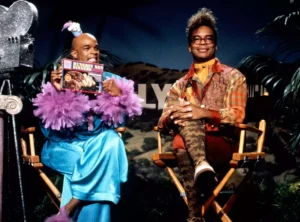
In Living Color was unapologetically Black, but also multicultural. Viewers got a weekly explosion of boundary-pushing sketch comedy through irreverent skits delivered by a motley crew of characters with then-burgeoning hip-hop as the backdrop.
“[In Living Color] made so many icons in an era where, if it didn’t exist, we may or may not have ever had them,” said actor Jermaine Fowler (Coming 2 America) of the show created by Keenen Ivory Wayans. “At that time, it was so special because there was nothing like that before. That group of talent was never seen before. From Jamie Foxx to Jennifer Lopez to Tommy Davidson, who deserves so much recognition for his talent. The man is so great at what he does. And Damon Wayans, and Shawn, Marlon, Kim, Keenan. In Living Color was an incubator for super stardom, for people who affected me and my growth. It still blows my mind the stuff they wrote, the stuff they got away with.”
Living Single (Fox, 1993–1998)
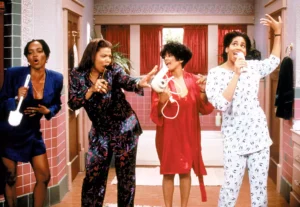
Living Single was a modern blueprint for sitcoms that featured friend groups, especially when it came to the four-girlfriend formula adopted by shows like Sex and the City, Girlfriends and the first season of Sistas.
“There was a void in the television landscape back then, not just in Black television but overall,” said Kim Fields, who played Régine on the sitcom. “That type of sitcom didn’t exist at that time. There was a void for these types of characters, the storylines, interaction and chemistry between the characters. It was groundbreaking because of how the show was written, and how the show was executed. We weren’t trying to be a Black show or a girl power show. We weren’t trying to be a great Black show. We were trying to be a great show, period. Yvette [Lee Bowser] wrote and created such relatable characters, that breathing life into them was breathtaking in the most wonderful character-creating way.”
Empire (Fox, 2015–2020)
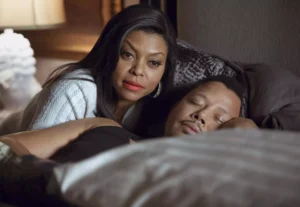
Empire served love and hip hop centered on a record label founded by gangstas. It delivered the drama that soap operas are supposed to — and then some.
“Empire was the first of its kind,” said Serayah, who played music star Tiana Brown. “It showcased a Black successful family in the entertainment industry, the glamour, the original music and the drama was exciting for people to watch. I am deeply grateful to have been part of such an iconic impactful show. I’m aware this type of success doesn’t happen everyday, so I feel blessed. Empire inspired so many other shows over the years, but that’s the cool part about it. All of the hard work we put in has inspired other creators and that makes it all worth it. I grew up watching and loving some shows on this list so to be in company with some of my culture’s best shows means the world to me.”
Abbott Elementary (ABC, 2021-Present)
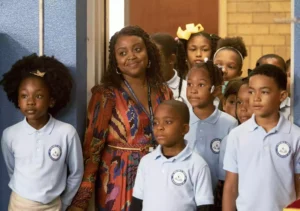
“It highlights teachers, our unsung heroes. It highlights education,” A Different World’s Dawnn Lewis said of the Quinta Brunson-created hit. “I love that show, and I love [Quinta’s] story, and I hope this is the beginning of her having many more opportunities.”
